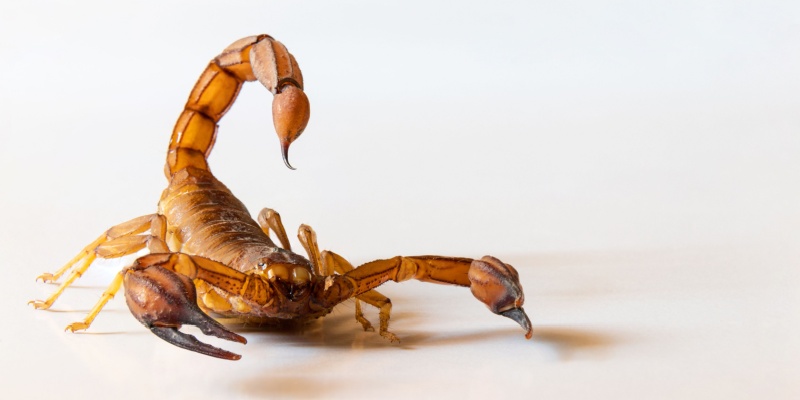The desert environment of Las Vegas comes with a variety of scorpions. These arachnids can pose a nuisance—and in some cases, a health risk—if they find their way indoors. Understanding which scorpion species are common in Las Vegas homes is the first step toward effective prevention and control.
1. Bark Scorpion (Centruroides sculpturatus)
The bark scorpion is arguably the most notorious scorpion species in Las Vegas. It’s smaller than many people realize, typically 2 to 3 inches in length, with a slender body and tail.
Key Characteristics:
- Pale yellow to light brown coloration
- Can climb walls and ceilings, often found in higher areas of the home
- Possesses a more dangerous venom than other regional scorpions
Why They’re a Threat: Bark scorpions have a painful sting that can cause serious symptoms, especially in children, the elderly, or people with compromised immune systems. Immediate medical attention is often recommended if stung by this species.
2. Desert Hairy Scorpion (Hadrurus arizonensis)
As the largest scorpion in North America, the desert hairy scorpion can reach up to 5 inches in length. Its name comes from the hair-like structures on its body, which help it sense vibrations.
Key Characteristics:
- Yellowish legs and pincers with a darker back
- Prefers to burrow in sandy or loose soil
- Less toxic venom compared to the bark scorpion
Why They’re a Threat: While their sting is painful, it’s generally not life-threatening. However, an encounter with a large desert hairy scorpion can still be alarming due to its size.
3. Yellow Ground Scorpion (Vaejovis confusus)
The yellow ground scorpion is smaller, often similar in size to the bark scorpion, and has a similar color palette.
Key Characteristics:
- Ranges from light yellowish-brown to a darker brown shade
- Typically found at ground level, under rocks or debris
- Sting is painful but less toxic than the bark scorpion
Why They’re a Threat: They can easily go unnoticed due to their size and color, increasing the likelihood of accidental contact.
4. Emperor Scorpion (Rarely Found)
Although not native to Las Vegas, some exotic pet owners might have emperor scorpions. If they escape captivity, they can become a household pest.
Key Characteristics:
- Large, black scorpions that can grow up to 8 inches
- Often sold in the pet trade
- Generally less aggressive with a mild sting
Why They’re a Threat: While less common in the wild around Las Vegas, they can still pose a risk if they escape. Their size alone can be intimidating to homeowners.
Habitat and Behavior
Scorpions are nocturnal creatures that prefer to hide in dark, secluded areas during the day. In desert climates like Las Vegas, they seek out cool, damp spots to escape the heat. Indoors, they might hide in shoes, closets, bathrooms, or even in ceiling corners.
Where to Check:
- Under-potted plants
- In garages and storage areas
- Near plumbing and utility lines
- Behind baseboards and in attic spaces
Prevention and Control
- Sealing Cracks: Use caulk to fill gaps around doors, windows, and utility penetrations.
- Reduce Clutter: Clear debris and storage piles where scorpions can hide.
- Landscaping Maintenance: Trim vegetation away from the home and eliminate standing water.
- Professional Help: A specialized pest control service can apply treatments that deter or kill scorpions and also inspect for potential entry points.
Safety Measures
- Wear Protective Footwear: Always wear shoes when venturing into areas where scorpions might be present.
- Shake Out Clothing and Shoes: Before putting on shoes or clothes left on the floor, shake them out to dislodge any hidden scorpions.
- UV Flashlights: Scorpions glow under a black light, making evening inspections easier.
Scorpions are an integral part of the Las Vegas desert ecosystem, and while encounters can be unsettling, knowing the types you’re likely to encounter at home helps you better prepare for prevention and control. Bark scorpions pose the greatest health risk, while desert hairy and yellow ground scorpions are mostly a painful nuisance. Either way, staying vigilant and employing proper pest management techniques—potentially with the help of a professional service like Pest Raiders—can greatly reduce the likelihood of sharing your living space with these unwelcome arachnids.
